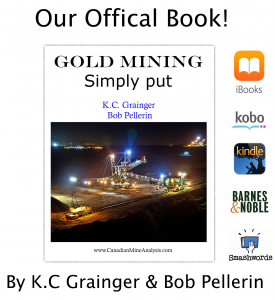Risk, PE Ratios and the Ottoman Empire 2.0
By Harold AGJ Davis 19 July 2016
Change unfolds as a slow and cumulative process over extended periods of time until something happens to cause an abrupt shift. Rock formations contain layers of different thickness and colour, often separated by very thin boundaries. What happened from one moment to the next?
Human history unfolds in much the same way, except that timespans are shorter and few recognize the periods equivalent of rock layers. Perhaps many are unaware of this cyclicality because it is partially obscured by the cumulative nature of technological progress, and they fail to consider that the route taken was not the only choice, nor was it inevitable. Thus, when a market guru suggests that his favourite holding period is forever or when the “buy, hold and prosper” types chant their mantra, they may be biased by uncritical confidence in the successes and good intentions of their known and familiar layer, the secular western world since 1945.
Confidence effects how much we are willing to pay for things. For equity investments, perhaps the most widely used valuation indicator is the P/E Ratio wherein the price of a stock is divided by the annual earnings per share to produce a ratio or “multiple” that can be compared across companies, industries and time. For instance, the S+P 500 Index is currently trading at about 25 times the total reported earnings of its constituent members over the last twelve months.
Since 1990, the S+P 500’s P/E ratio has generally, with brief exception, traded above 15X earnings and, on occasion has traded well over 25 times. During two brief periods since 2000, the S+P traded at over 40 times earnings. So, current valuation levels near 25X are “rich” but not excessive. Or are they? According to one data source, for 120 years from 1870 to 1990, US stocks traded at a P/E multiple between 6X and 25X earnings and averaged a little less than 15X. This means that the current generation of investors has spent almost its entire adult life in a valuation range far above the historic norm.
Perhaps the current high valuation range has its genesis in the famous 1987 post-Crash telex sent out by the Federal Reserve to primary dealers stating, “We will provide liquidity”. That support seems to mark the beginnings of the “irrational exuberance” that has subsequently encouraged reckless trading/asset allocation and the belief that policymakers will indemnify bankers from the consequences of their own stupidity based on the doctrines of “too big to fail” and the avoidance of systemic risk at all costs. However, what if we give central bankers too much credit and there are events beyond their control that can alter perceptions about reality, risk, and confidence?
For example, consider the recent failed coup attempt in Turkey. Aside from tourist memories about “that rug guy”, how much do western investors know about the historic facts and ambitions of Turkey, formerly home of the Hittite Empire, the eastern Roman Empire and the Ottoman Empire. Readers are recommended to Google: territorial evolution of the Ottoman Empire – Wikipedia. As you scroll through the maps, note that many regional countries including the Balkan states, Greece, Bulgaria, Jordan, Syria and Iraq spent almost all of their post-Dark Ages history as vassals of the Ottoman Empire. Even Egypt, with the exception of Napoleon’s brief conquest, was part of the Ottoman Empire until Britain seized control to protect the Suez Canal.
The relevance of this simple observation is that “nature abhors a vacuum” and Turkey is presently a strong country with a large army in the midst of a bunch of failed modern states that were previously its “provinces” or dependents. Many borders in the region came out of the post-WW1 Treaty of Versailles and have little basis in history or ethnic geography. So, as the President of Turkey pushes forward with his still emerging agenda, what is he thinking and where is he going with this?
That question is far from idle because, in addition to Iraq, the Ottoman Empire also owned the Libyan coast, came geographically close to controlling Kuwait and did rule the east coast of the Red Sea and some of the hinterland of Saudi Arabia. While a single wave of conquest is not being predicted, it is still noteworthy that those four countries represent a large percentage of global crude oil supplies. Meanwhile, the Suez Canal remains a vital trade route.
At a point in time when the future of Europe is opaque and the Middle East could change course quickly, perceptions of equity market risk should be adjusted. Stated differently, are generous share prices equivalent to 25X earnings really justified in view of next month’s possible headlines? Remember that the investing public cannot adjust the companies’ reported earnings, only the prices they pay for them.
Harold AGJ Davis is the Author and Analyst at www.prairiecropcharts.com
